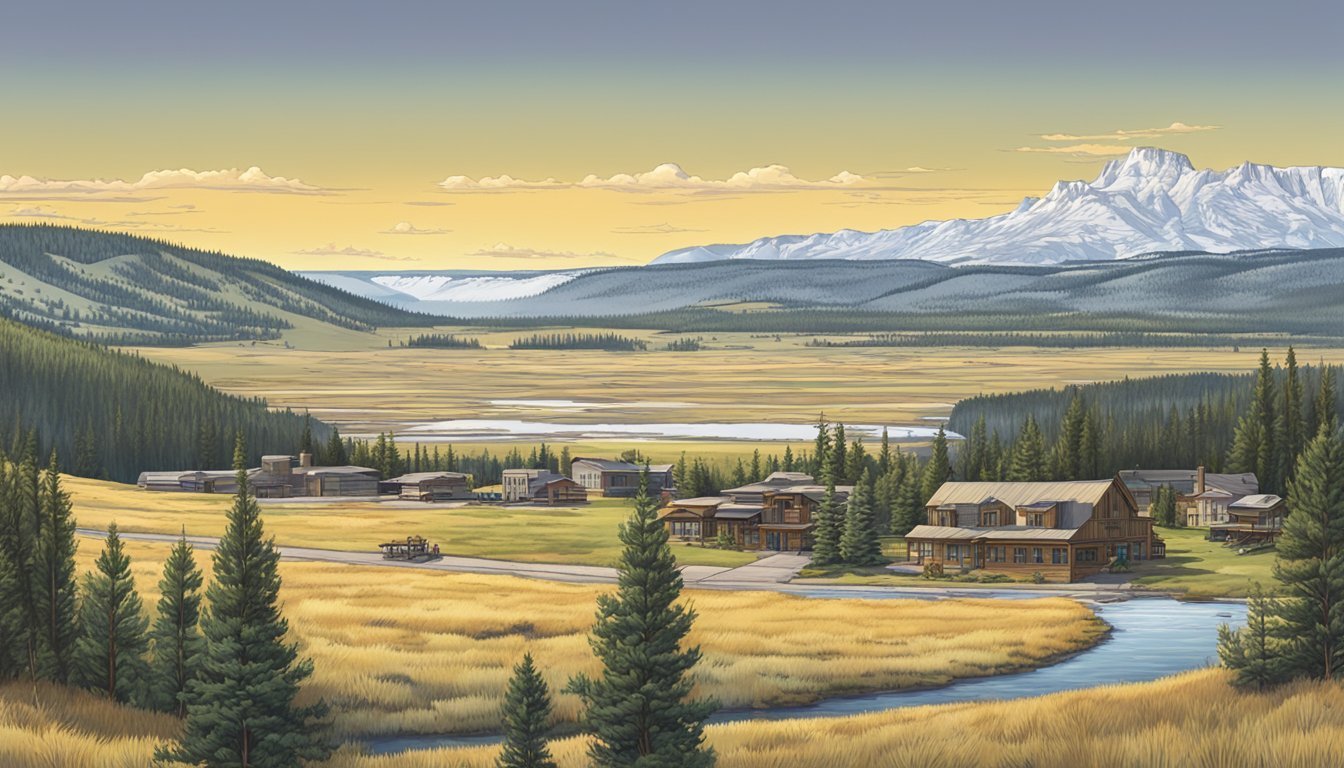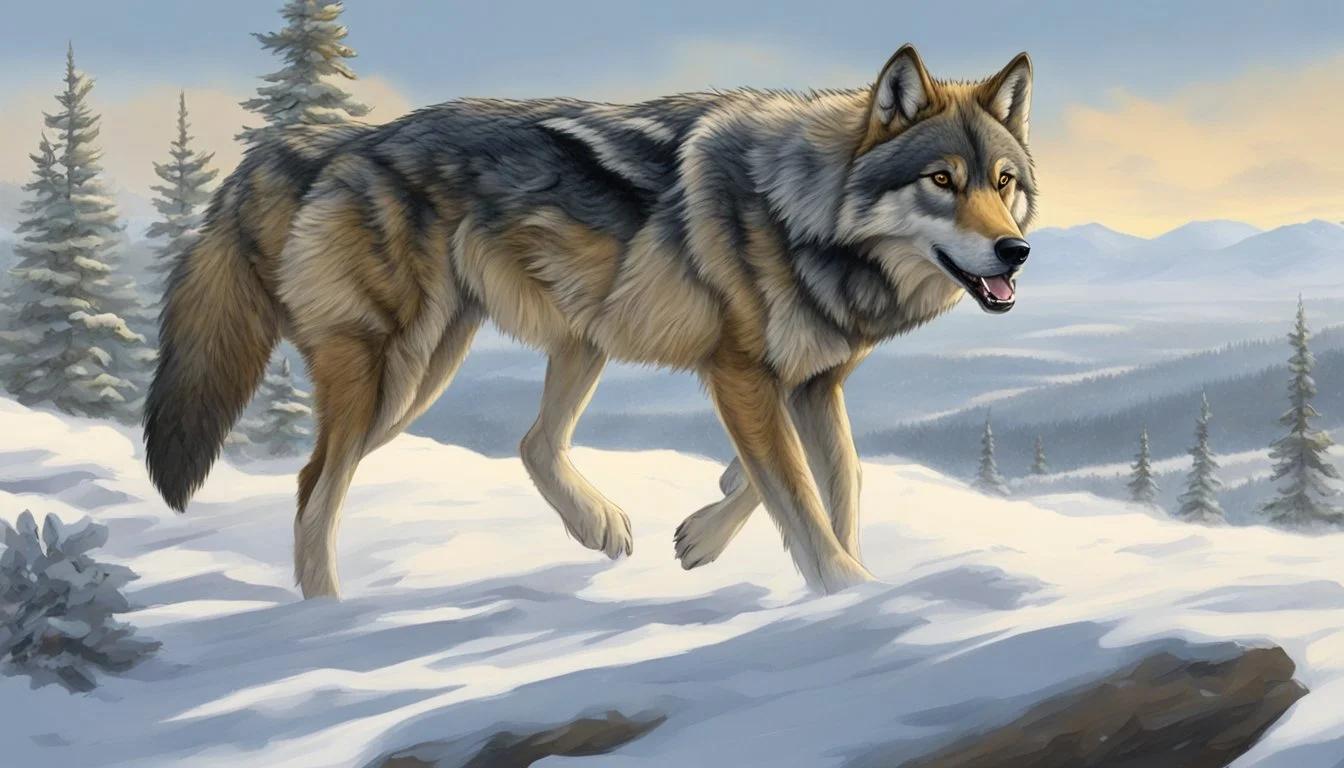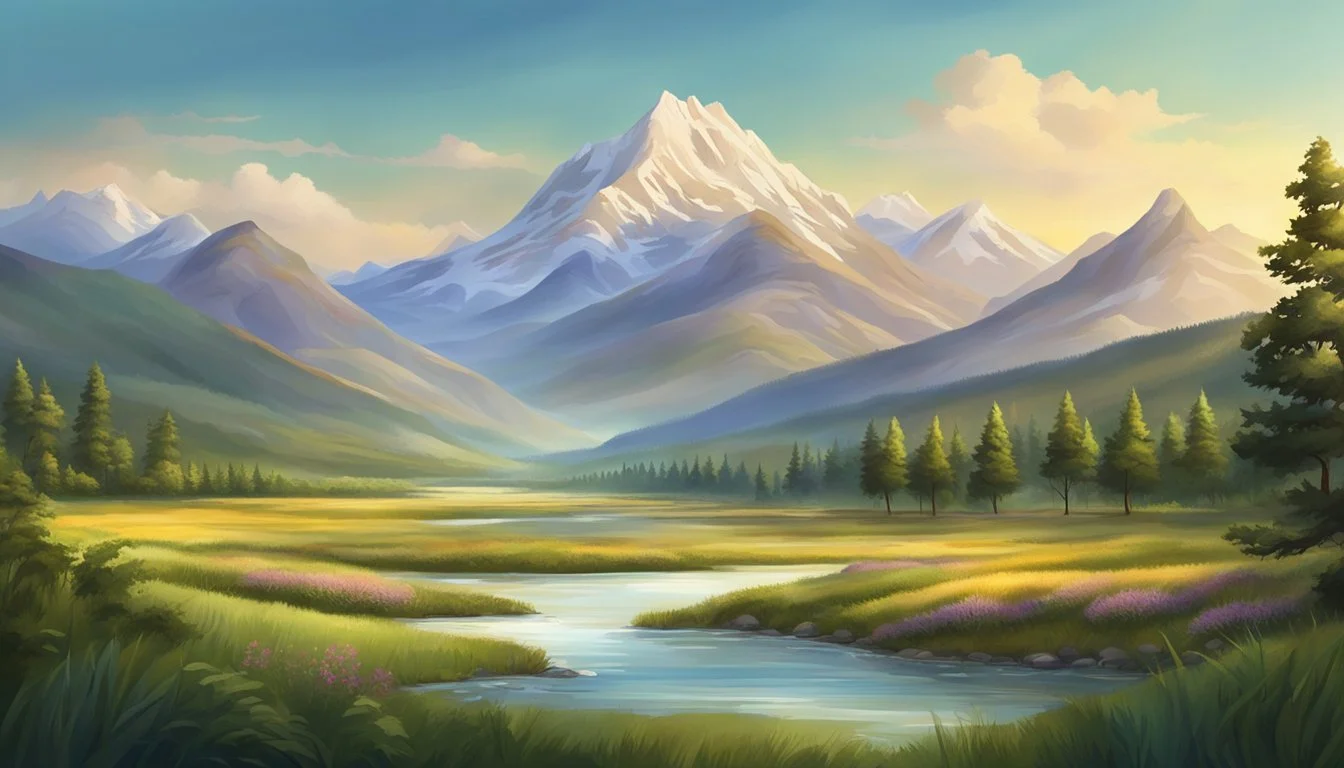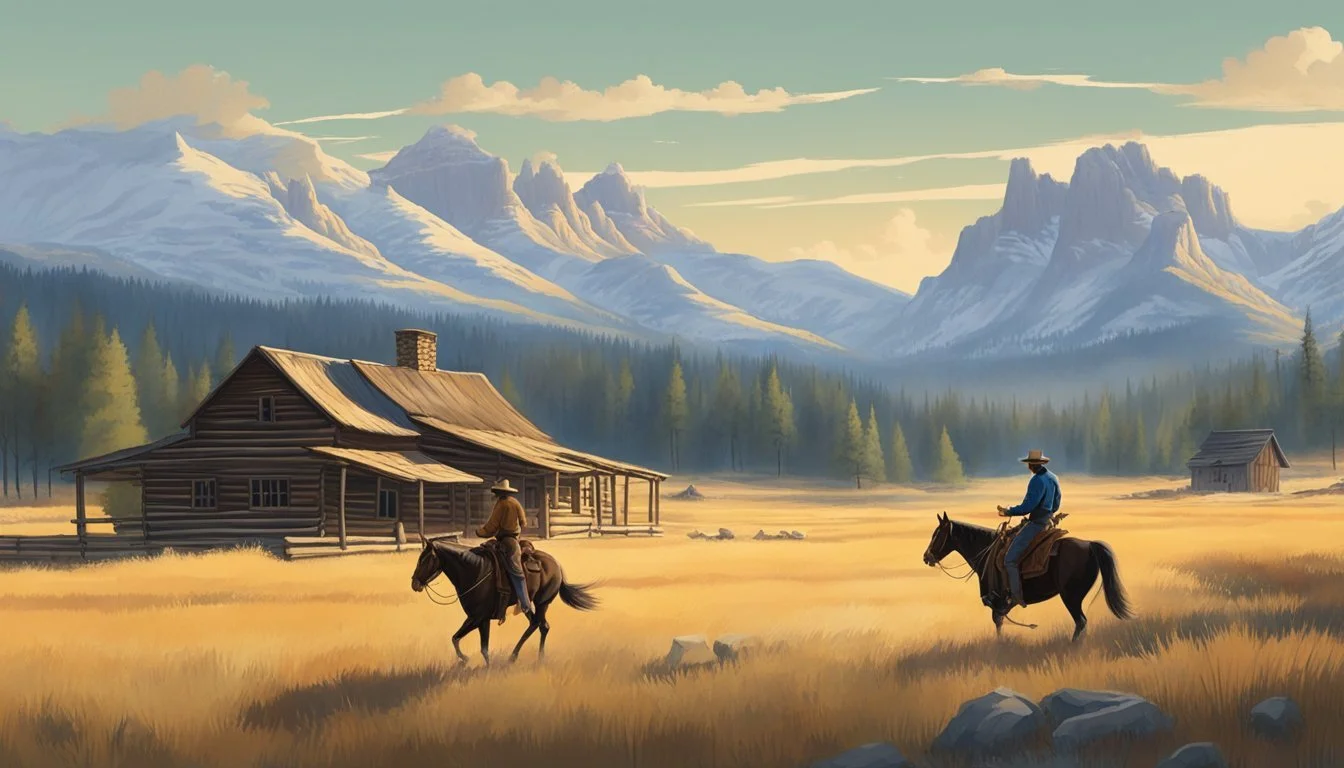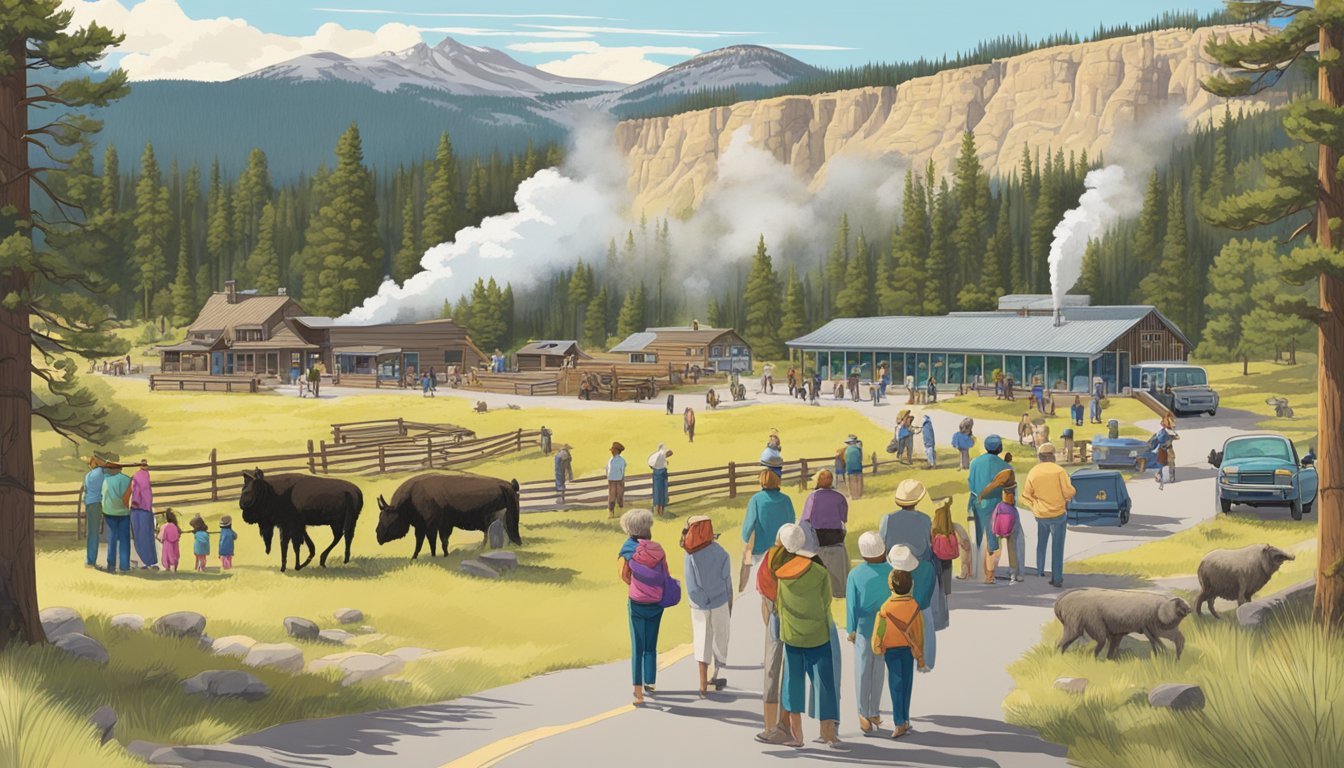Generational Differences in Yellowstone's Montana Setting
Past and Present Collide in America's First National Park
Yellowstone, the popular TV series set in rural Montana, showcases the generational differences that shape the state's changing landscape. The show centers on the Dutton family and their struggle to maintain their vast Yellowstone Dutton Ranch amid modern pressures and evolving societal norms.
The series expertly portrays the clash between traditional ranching culture and contemporary economic forces, highlighting the generational divide in values and priorities. John Dutton, the family patriarch, embodies the old-guard mentality of land stewardship and rugged individualism. His children, however, represent a new generation grappling with the realities of a changing Montana.
The show's portrayal of power dynamics in rural Montana extends beyond the Dutton family, touching on broader themes of land ownership, political maneuvering, and the state's complex history. It offers a nuanced look at how different generations approach these issues, from those deeply rooted in Montana's ranching traditions to those seeking to modernize and adapt to new economic realities.
Historical Context of the Yellowstone Region
The Yellowstone region has a rich history shaped by early settlers and pivotal events. Its development intertwines with the story of the Dutton family and their ranch, set against the backdrop of Montana's rugged landscape.
Early Settlement and the Formation of the Dutton Ranch
James Dutton, a Civil War veteran, led his family west in 1883. They settled in Montana's Paradise Valley, establishing what would become the Yellowstone Dutton Ranch. The Duttons faced harsh conditions and fierce competition for land and resources.
Their ranch grew as Montana's cattle industry boomed. The family's resilience and strategic land acquisitions helped them weather economic fluctuations and natural disasters. By the early 1900s, the Dutton Ranch had become a significant presence in the region.
Significant Historical Events: 1883 and 1923
1883 marked a turning point for the Yellowstone area. The Northern Pacific Railroad completed its transcontinental line, bringing an influx of settlers and tourists. This development spurred economic growth but also increased pressure on natural resources.
In 1923, Yellowstone National Park celebrated its 50th anniversary. This milestone highlighted the region's transformation from a remote wilderness to a renowned destination. The event showcased the delicate balance between conservation efforts and the expanding ranching operations surrounding the park.
These years saw shifts in land use policies and wildlife management practices. Ranchers like the Duttons had to adapt to changing regulations and environmental concerns.
Cultural Impact of 'Yellowstone' TV Series
Yellowstone has become a cultural phenomenon, reshaping perceptions of the American West and influencing television production trends. The series has sparked discussions about land ownership, family dynamics, and the changing face of rural America.
Popularity and Reception
Yellowstone has gained a massive following since its debut on Paramount Network. The show consistently attracts millions of viewers, making it one of cable television's most-watched series. Its popularity extends beyond traditional TV, with strong streaming numbers on Paramount+.
Taylor Sheridan's creation resonates with audiences through its portrayal of power struggles and family loyalty. The stellar performances, led by Kevin Costner, have garnered critical acclaim and numerous award nominations.
Yellowstone's fanbase is highly engaged, discussing plot developments and character arcs on social media platforms. This engagement has contributed to the show's status as a cultural touchstone.
Influence on Perception of the American West
Yellowstone has significantly impacted how audiences view the modern American West. The series showcases Montana's breathtaking landscapes, sparking increased tourism to the region.
The show's depiction of conflicts between ranchers, Native Americans, and developers has brought attention to real-world issues facing rural communities. It has sparked conversations about land rights, conservation, and the preservation of traditional ways of life.
Yellowstone's success has influenced Hollywood production trends. More shows are now filming on location to capture authentic settings. The series has also inspired a renewed interest in Western-themed content across various media platforms.
Through its storytelling, Yellowstone offers a nuanced portrayal of American life in the West, challenging stereotypes and presenting complex characters grappling with changing times.
Character Dynamics and Development
The characters in Yellowstone drive the narrative through their complex relationships and personal growth. Their interactions shape the power struggles and family drama at the heart of the series.
Relationships within the Dutton Family
John Dutton stands as the patriarch, fiercely protective of his legacy and land. His children - Beth, Jamie, and Kayce - each grapple with their roles in the family business. Beth, sharp-tongued and ruthless, serves as John's most loyal ally. Jamie struggles with his identity and place in the family. Kayce balances his duties to the ranch with his own family obligations.
Rip Wheeler, though not blood-related, becomes an integral part of the Dutton clan. His unwavering loyalty to John and romance with Beth add depth to the family dynamics.
Key Antagonists and Allies
Thomas Rainwater emerges as a formidable opponent to the Duttons, representing Native American interests in land disputes. His calculated moves challenge the family's dominance.
Market Equities, led by ambitious executives, threatens the Dutton empire with their aggressive expansion plans. Their tactics force the family to adapt and fight back.
Governor Lynelle Perry plays a complex role, sometimes ally, sometimes adversary. Her political influence impacts the Duttons' strategies and fortunes.
Generational Perspectives on Land and Power
The clash between traditional values and modern pressures in Montana's Paradise Valley shapes the intergenerational conflicts depicted in Yellowstone. Land ownership and power dynamics create tensions between long-time ranchers and newcomers.
Land Use Conflict and Gentrification
Yellowstone portrays the struggle between preserving rural ways of life and encroaching development. Wealthy outsiders buy up land, driving up property values and threatening ranching culture. This gentrification forces multi-generational ranching families to adapt or sell.
Developers eye the picturesque valley for luxury homes and resorts. Their projects promise economic growth but risk eroding the area's character. Longtime residents fear losing their livelihoods and heritage as Paradise Valley transforms.
The show highlights how different generations view these changes. Older ranchers fiercely defend their land and traditions. Younger characters grapple with balancing preservation and progress in a changing landscape.
Duttons' Fight to Preserve Their Legacy
The Dutton family exemplifies the generational fight to maintain power and land ownership. John Dutton, the patriarch, views the Yellowstone Dutton Ranch as his family's birthright and legacy. He employs both legal and illegal tactics to protect it.
His children have complex relationships with the ranch:
Jamie struggles between family loyalty and political ambitions
Beth fiercely defends the ranch through corporate maneuvering
Kayce balances ranching traditions with his young family's needs
The ranch represents more than just land to the Duttons. It embodies their family history, identity, and source of influence in the region. Preserving it means safeguarding their way of life and power for future generations.
Socioeconomic Themes in 'Yellowstone'
The TV series 'Yellowstone' portrays complex socioeconomic issues faced by rural Montana communities. It explores land ownership conflicts, wealth disparities, and tensions between traditional ways of life and modern development pressures.
Struggles of Rural Montana
'Yellowstone' depicts the economic challenges of ranching families in Montana. The Dutton family's struggle to maintain their vast ranch illustrates the pressures on traditional agricultural livelihoods.
Land development threatens their way of life. Corporate interests seek to acquire and exploit valuable properties, often at the expense of long-time residents.
The show highlights wealth inequality in rural areas. It contrasts the Duttons' expansive ranch with the financial struggles of local workers and smaller landowners.
'Yellowstone' also touches on the decline of rural economies. It shows how traditional industries like ranching face increasing economic pressures and competition from modern sectors.
Representation of Indigenous Communities
The Broken Rock Indian Reservation plays a significant role in 'Yellowstone's' narrative. The series depicts the economic challenges faced by Indigenous communities in Montana.
Land rights disputes between the reservation and neighboring ranches are a central conflict. These reflect real-world tensions over historical land claims and resource access.
The show portrays efforts by Indigenous characters to preserve their culture and traditions. It also highlights their attempts to create economic opportunities within the reservation.
'Yellowstone' explores the complex relationships between Indigenous communities and local and state governments. It shows how policy decisions impact reservation life and economic development.
The series depicts the reservation's pursuit of economic self-determination. This includes efforts to develop casinos and other enterprises to generate revenue and employment.
Evolution of the Western Genre
The Western genre has undergone significant transformations, adapting to changing audience tastes and societal perspectives. This evolution is exemplified by the shift from classic Westerns to modern interpretations like "Yellowstone."
From Classic Westerns to 'Yellowstone'
Classic Westerns often portrayed a romanticized version of the American frontier, focusing on heroic cowboys and lawmen. These stories typically featured clear-cut morality and rugged individualism.
As societal attitudes evolved, so did the genre. Neo-Westerns emerged, offering more complex characters and nuanced storytelling. Films like "Unforgiven" and "No Country for Old Men" challenged traditional Western tropes.
"Yellowstone" represents the latest stage in this evolution. It blends classic Western elements with contemporary themes, creating a unique viewing experience.
The 'Yellowstone' Series as a Modern Western
"Yellowstone" reimagines the Western for the 21st century. Set in present-day Montana, it explores conflicts between ranchers, land developers, and Native Americans.
The show's creator, Taylor Sheridan, infuses the series with traditional Western imagery while addressing modern issues. Characters grapple with complex moral dilemmas, moving beyond the black-and-white morality of classic Westerns.
"Yellowstone" showcases the enduring appeal of the American West while updating the genre for contemporary audiences. It tackles themes of family legacy, political power, and environmental concerns, reflecting current societal debates.
Impact on Local and National Tourism
The Yellowstone television series has significantly boosted tourism in Montana. A 2023 study revealed the show generated $731.1 million for the state's economy, including $44.5 million in tax revenues.
Visitor numbers to Yellowstone National Park have surged, with many fans eager to experience the landscapes featured in the show. This influx has created both opportunities and challenges for local communities.
Paradise Valley, a key filming location, has seen a notable increase in visitors. Local businesses have benefited from increased patronage, while some residents express concerns about overcrowding and environmental impacts.
The show's popularity has extended tourism effects beyond Montana. Neighboring states like Oregon have reported increased interest from travelers seeking similar scenic experiences.
National tourism trends show a growing preference for outdoor destinations and rural getaways, partly influenced by media portrayals like Yellowstone. This shift has implications for infrastructure, conservation efforts, and local economies across the American West.
Tourism officials are working to balance economic benefits with sustainable practices. Efforts include promoting less-visited areas, implementing visitor management strategies, and educating tourists about responsible travel.
Legacy and Future of the 'Yellowstone' Franchise
The 'Yellowstone' series has left an indelible mark on television and popular culture. Its impact extends beyond viewership numbers, shaping perceptions of the modern American West and influencing broader entertainment trends.
Seasonal Developments and Speculations
Season 5 of 'Yellowstone' continues to captivate audiences with its intense family drama and stunning Montana landscapes. The Dutton family's struggle to maintain their ranch remains central, with Margaret Dutton emerging as a key figure in preserving the family's legacy.
Family loyalty is tested as external threats, including corporate interests and local adversaries, intensify. The show's creators have hinted at exploring historical storylines, potentially featuring encounters with horse thieves that shaped the Dutton empire.
Rumors of potential spin-offs and prequels have circulated, suggesting the franchise may expand to cover different eras of the Dutton family history.
Continuing Influence on Culture and Media
'Yellowstone' has redefined the modern Western genre, sparking renewed interest in ranch life and cowboy culture. Its success has prompted other networks to develop similar shows set in rural America.
The series' impact extends to fashion, with Western wear experiencing a resurgence in popularity. Tourism to Montana has increased, with fans eager to experience the landscapes featured in the show.
'Yellowstone' has also sparked conversations about land use, conservation, and the changing face of the American West. Its themes resonate with viewers grappling with similar issues in their own communities.



